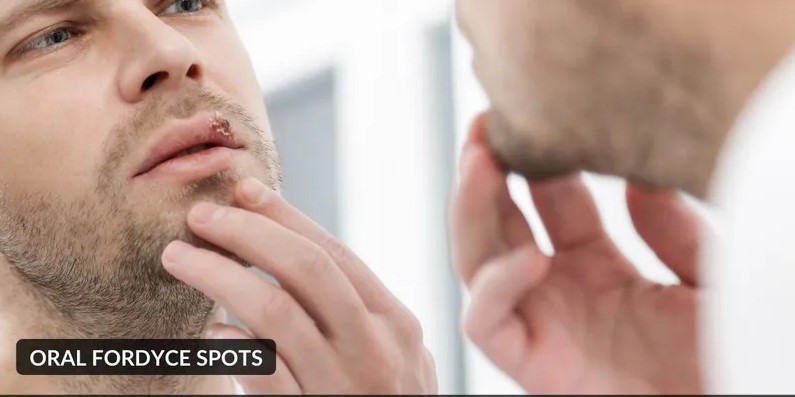BOURSESSENEGAL – If you’ve noticed small, painless bumps on your lips or the inside of your cheeks, you might be looking at Fordyce spots. These spots are a common concern, yet many people are unsure about what they are and how to handle them. In this article, we’ll explore Fordyce spots in detail, covering their causes, characteristics, and management strategies. By the end, you’ll have a clear understanding of Fordyce and how to approach them effectively.
What Are Fordyce Spots?
Fordyce spots are small, painless, pale or red bumps that appear on the lips, the inside of the cheeks, or the genitals. They are sebaceous glands that have become visible due to their superficial positioning in the skin. Unlike acne or other skin conditions, Fordyce are not harmful and do not require treatment. They are a normal anatomical variant that many people experience.
Characteristics of Fordyce Spots
- Appearance: Typically, Fordyce appear as small, yellowish-white bumps. They can be 1-3 mm in diameter and may appear singularly or in clusters.
- Location: You’ll most often find them on the vermilion border of the lips and the buccal mucosa inside the mouth. They can also appear on the scrotum or labia.
- Texture: These spots are smooth and often don’t change over time. They don’t itch or cause discomfort, which helps distinguish them from other skin conditions.
Causes of Fordyce Spots
The exact cause of Fordyce spots remains unclear. However, several factors contribute to their development:
- Genetics: If someone in your family has Fordyce, there’s a higher chance you may develop them too.
- Hormonal Changes: Hormonal fluctuations during puberty, pregnancy, or other life stages might lead to the appearance of these spots.
- Skin Type: People with oily skin may be more prone to developing Fordyce.
Are Fordyce Spots Harmful?
It’s crucial to emphasize that Fordyce are harmless. They are not a sign of an underlying health issue or a sexually transmitted infection. In most cases, they require no medical intervention. However, if you’re ever unsure about skin changes, consulting a healthcare professional is always a wise choice.
How to Manage Fordyce Spots
While Fordyce spots do not require treatment, many individuals seek ways to manage their appearance. Here are some strategies you can consider:
1. Consult a Dermatologist
If you’re concerned about Fordyce , consult a dermatologist. They can confirm the diagnosis and rule out other skin conditions. Knowing exactly what you’re dealing with can provide peace of mind.
2. Topical Treatments
There are no specific treatments for Fordyce , but some individuals find relief using topical solutions. Over-the-counter creams designed for acne or oily skin may help reduce the appearance of these spots, although results can vary.
3. Laser Treatment
For those who desire a more permanent solution, laser treatment is an option. This method involves using laser technology to diminish the visibility of Fordyce . Consult with a dermatologist to discuss the best approach for your skin type and condition.
4. Maintain Good Oral Hygiene
While Fordyce themselves are not a dental issue, maintaining good oral hygiene can help keep your mouth healthy. Brush your teeth and gums regularly and consider using an antibacterial mouthwash to keep your mouth clean.
5. Stay Hydrated and Eat Healthy
Hydration and a balanced diet contribute to overall skin health. Drinking plenty of water and consuming fruits and vegetables can help maintain your skin’s elasticity and appearance.
Common Misconceptions About Fordyce Spots
Misconception 1: Fordyce Spots Are Contagious
One common misconception is that Fordyce are contagious. This is false. They are not caused by an infection and cannot be transmitted from person to person.
Misconception 2: Fordyce Spots Indicate a Medical Problem
Another misconception is that the presence of Fordyce signifies a medical issue. As previously mentioned, they are normal anatomical variants and pose no health risks.
Misconception 3: They Require Immediate Treatment
Many people worry that Fordyce need urgent care. In reality, since they are harmless, treatment is optional and typically based on personal preference regarding appearance.
When to See a Doctor
While Fordyce spots are generally benign, you should see a healthcare professional if:
- The spots change in color or size.
- You experience discomfort or itching.
- You develop new symptoms alongside the spots.
These signs might indicate a different skin condition that requires medical attention.
Conclusion
Understanding Fordyce helps demystify what they are and how to manage them. While they are harmless and commonly occur, the desire to manage their appearance is completely normal. By consulting a dermatologist and considering available options, you can take control of your skin health. Remember, maintaining good overall health and hygiene practices goes a long way in keeping your skin looking its best.
In summary, Fordyce are a natural occurrence, and with the right knowledge and approach, you can manage them effectively while enjoying healthy skin. If you’re concerned about your skin, don’t hesitate to reach out to a professional who can guide you through your options.
REFERENCE : https://www.cdcfoundation.org/



